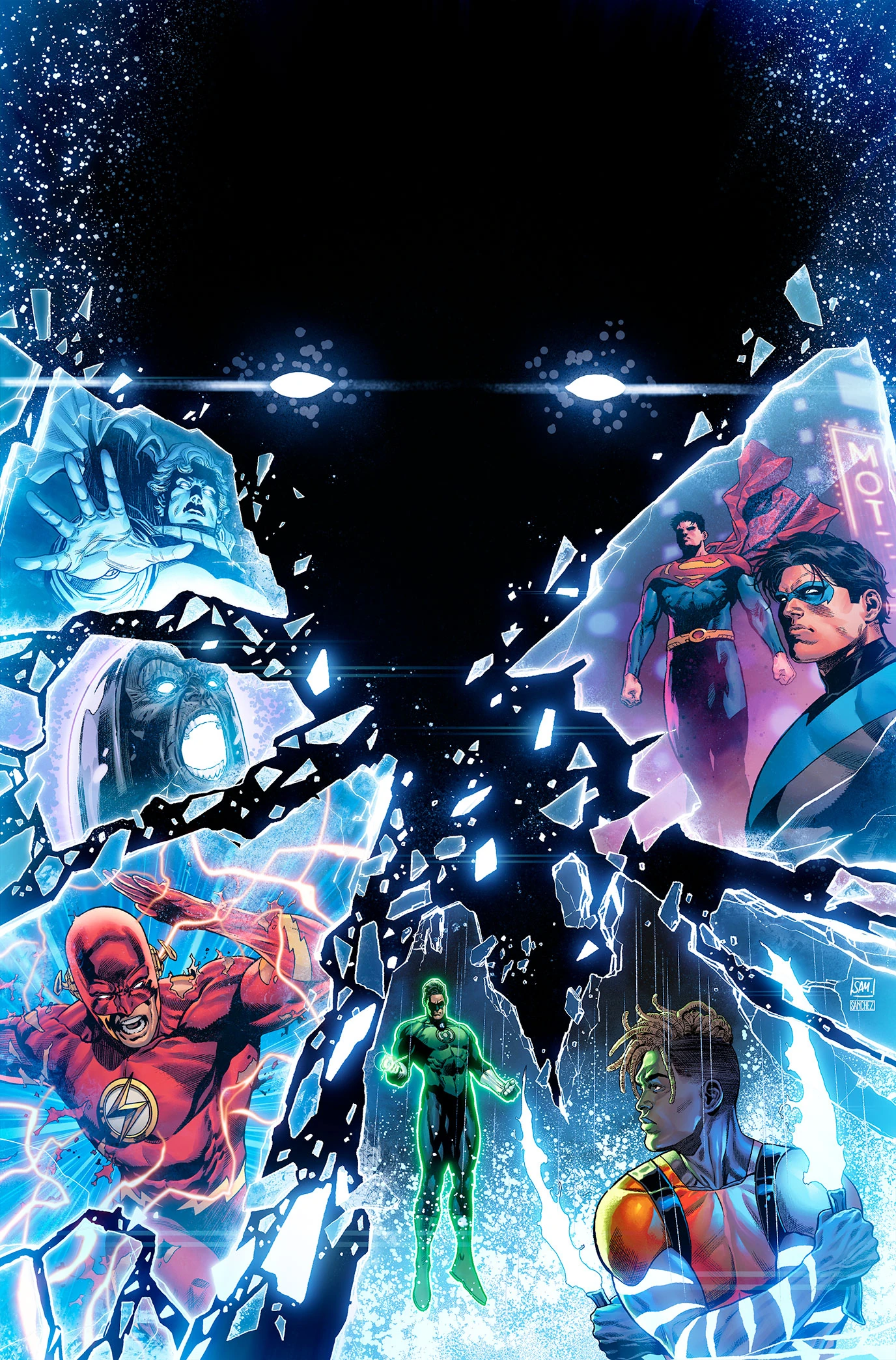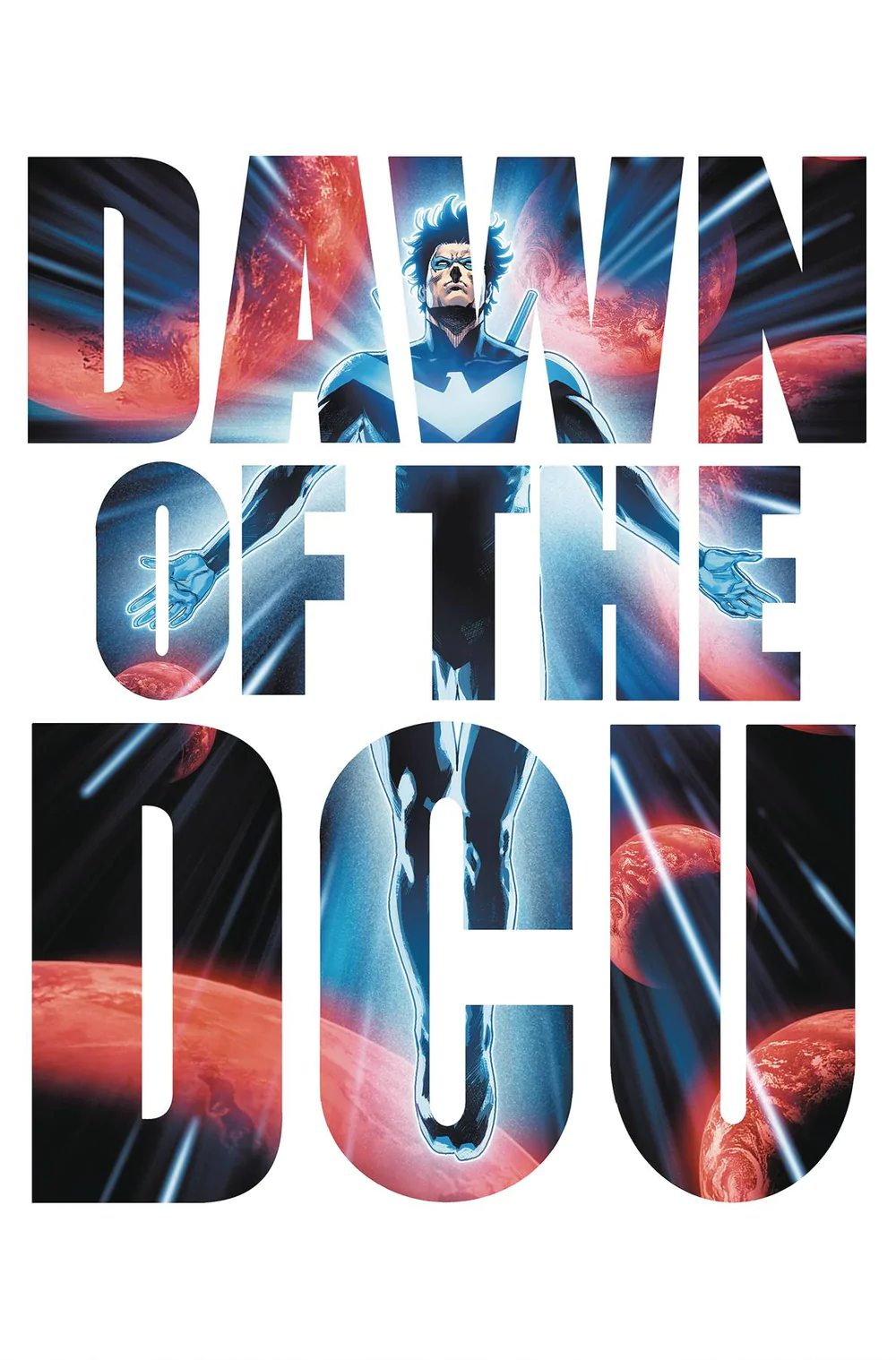After facing every number of infinite crises, the latest DC event attempts to pay homage to the original and every sequel by reestablishing the multiverse status quo and establishing that a mysterious enemy is working from the shadows.

The latest threat to the DC comics multiverse has come to an end! After a rebirth that promised to retcon much of the head-scratching that emerged from much of 2014’s “The New 52” publishing-wide shake-up, and the optimistic ascension into the “Infinite Frontier” after the chilling mid-evil madness of the “Metal” milestone, the DARK CRISIS on Infinite Earths has ended and left in its wake, a reconstituted multiverse of infinite capacity. Pariah, a one-time cornerstone of the Monitor’s original “crisis” event, was determined to undo it all, at any cost.
The sole survivor of an alternate universe that is lost to the antimatter wave unleashed by the Anti-Monitor in his plan to reconstruct all of existence in his own image, Pariah has since suffered in silence watching the universe and then the multiverse unravel again and again. Every time the multiverse reconstitutes, Pariah remains alone, lost, and abandoned. His curse: to bear witness to the final moments of every world, every civilization in any part of the multiverse, and watch as its people disappeared — like his dead — from all existence.
When Dark Crisis begins, Pariah is the megalomaniacal menace with a plan to rehabilitate the multiverse, but at the cost of the existence of this current iteration of a Prime-Earth and its universe. It would take all of Earth’s Greatest Heroes to stand together and stop him in his tracks, but unbeknownst to the Justice League, Pariah has amassed his own legion of doom. A dark army of the most notoriously dangerous adversaries of all that is good, enslaved by “the Great Darkness” to assist in bringing his plan into effect.

The Prologue
At the onset of the “Dark Crisis,” the sinister event is set in motion when the Justice League is attacked by Pariah and his Dark Army and are presumed dead. Only Black Adam, who recently had aligned himself with the JL, survived to bring word to the surviving heroes of the coming threat. The multiverse was under attack, and the next line of defense would have to come from the next generation, but were they ready to step up? Black Adam did not think so, but Nightwing was determined to lead the charge and prove Black Adam wrong.
The benchmark of the “Dark Crisis” narrative is the reinvigoration of the legacy of DC heroes. An entire generation of new characters had cropped up during the “Infinite Frontier/Future State” rebranding, with a more grownup Jon Kent returning from the future in a stint as the 30th Century’s Superman, and the Brazilian Wonder Girl, and Jace Fox (the son of long-time Bruce Wayne associate and confidant Lucious Fox) assuming the mantle of a Batman, using his family’s technology in the defense of Gotham City. All the while, shining the spotlight on Dick Grayson, and his career alongside Batman.
Series writer Joshua Williamson with art from Daniel Sampere rightfully kicks off the 7-issue run of “Dark Crisis” with Dick reflecting on his mentor on the steps of the Hall of Justice, eulogizing Batman and the rest of the assumed dead members of the Justice League. It’s a deeply sorrowful moment, that inspires Jon Kent, the new Superman to begin to assemble a make-shift team of young heroes to replace the Justice League. At the conclusion of that first issue, Deathstroke another accomplice playing his role in the scheme of things launches an attack on Titans Tower and takes out Beast Boy!

A Crisis By Any Other Name…
For the next several issues, it becomes apparent to many that perhaps the Justice League is not dead, even as Black Adam continues to blame himself and ineffectually contributes to finding a solution to the crisis. One of the most powerful characters in the DC multiverse instead plagues Nightwing and Jon Kent with doubt, and ultimately decides it might be better to side with Deathstroke, who has bargained with The Dark Darkness and assumed control of Pariah’s Dark Army adding an arsenal of super villains to his frontlines!
The Flash(es) embark on a mission to locate Barry Allen, whom they learn has been traversing the multiverse with members of Justice Infinite to discover that Pariah has trapped him and his teammates in the JL in parallel worlds designed to distract them while Pariah siphons their power to (re)create the multiverse. It’s a bit of a convoluted plot line that leads to several off-shoot series that depict the experiences of the heroes in those worlds. The Flash(es) specifically Barry and Kid Flash, decide that this multiverse will require some exploration, and by the end of the series dive into their mission.
Eventually, Hal Jordan and the Green Lantern Corp are able to rescue the Justice League and just in time return them home, as Deathstroke launches his plan to destroy them all and erase Earth-Prime from existence, giving Pariah the necessary bandwidth to release the multiverse. What transpires next is nothing short of really confusing, as it is not entirely clear who Pariah has been in league with. The Great Darkness doesn’t appear to be anything but an innocuous malevolent force (for the moment) that exists to corrupt (didn’t that just happen during the entire Dark Multiverse/Metal event?).
The magic-user Constantine actually confronts The Great Darkness and learns the most about the then benevolent superpower, but it still is rather vague where this power source is generated from and what its purpose is.
It’s at least not clear to this writer what “The Great Darkness” represents except that it appears as a conceptual part of all of our natures, but one that Nightwing is able to rise above and in effect not succumb to. In fact, Nightwing is able to wield his darkness in defense and takes out Deathstroke. It's this distraction that leads The Flash(es) along with the second Dr. Light to (re)ignite the revived multiverse and cause it to now become infinite. Restoring the health and balance of Pariah’s resurrected multiverse which now powers an infinite multiverse, sets everything on course.
The Epilogue
The villainous Dark Army is defeated, and the supervillains disappear from the battlefield and are now dangerously at large. Heroic generations are reunited with the members of the Justice League, but the most notable casualty missing in action is Oliver Queen, the Green Arrow. Now the clean-up begins and families are reunited ready to confront whatever evil lies in wait, for inevitably another “crisis” is just around the corner. The Justice League decides not to reconstitute its membership for the moment, and pick up the pieces of what is left behind.
Perhaps one of the most obscure consequences out the other end of “Dark Crisis” is the DC Universe extrapolation of The Light — a clandestine organization that works behind the scenes to manipulate world order to their own whims and purposes. Similar to their role as a secret society of villains that are pulling the strings on the animated series Young Justice the organization is banking on creating relationships in order to enact their mission. At the end of “Dark Crisis,” one individual steps out and into the spotlight determined to be the fly in the ointment of our heroes — Amanda Waller.
The mastermind behind the Task Force X, Suicide Squad program is now promising to keep an eye on the growing metahuman community, and especially “superheroes” — and if they ever step out of line, Waller will be the stop gate to bring them down. The Light will be sponsoring her efforts and will be supplying her with the resources she needs. At the conclusion of the original “Crisis on Infinite Earths” and into the following event “Legends”, Waller sets up her team of despots in the Suicide Squad and is also revealed to be a charter member of Checkmate.
If it's true that the DC multiverse resets itself every decade or so in order to compensate for the overflow of story narratives that tend to build up, forcing creatives to often reexamine characters and come up with inventive ways of re-inspiring their profiles, “Dark Crisis on Infinite Earths” didn’t exactly do that in a satisfying or unique way. Its purpose wasn’t very clear and it felt that it pulled the best components from previous events “Infinite Crisis” and “Final Crisis” with dashes of “Blackest Night” to tell its story, leaving for a dissatisfying conclusion that didn’t prove much relevance.

DC’s DARK CRISIS ON INFINITE EARTHS | 7-issue special event | written by Joshua Williamson with art from Daniel Sampere and others is published by DC and available in 7 single issues and on digital platforms including DC Infinite.
Also, keep connected, and don’t forget to check out www.TheFanzite.com also available to subscribe on Apple News.









Comments